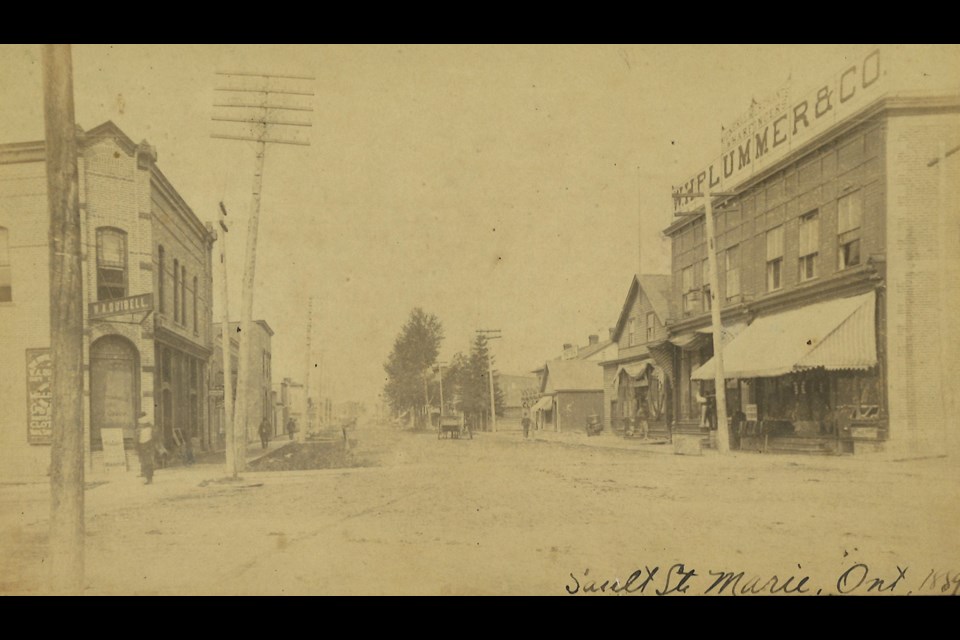In 1889, the town council was led by Mayor Edward Biggings and he was supported by councillors D. Cameron, Oscar Olmstead, D.T. Graham, Albert Carney, Isaac Taillefer and W.R. Cunningham. Allen C. Renaud was the Clerk, Jonathan Wilde was the town Engineer and H.C. Hamilton was the town Solicitor. The Minute Books from this early council reveal that they had to deal with some interesting issues.
One of the first issues to be brought before this council dealt with foreign labour.
It passed a bylaw stating that foreign labour was not to be employed in municipal works. With the establishment of Clergue’s Industrial Empire within the next decade, there was a significant influx of immigrants who arrived to work in all of these industries so it appears that this is one bylaw that was very rapidly dispensed with!
One notable observation is that the residents of the town had strong opinions and were very quick to share their opinions with their town council if they didn’t agree with their decisions.
In one case, the council proposed making improvements by building or replacing sidewalks for some of the streets in the downtown area.
Major Wilson and Mr. Vaughan appeared before council to object to the construction of a sidewalk on the south side of Queen Street between Spring and Elgin Streets. No explanation is provided for their objections but it appears that Major Wilson was very persuasive and the sidewalk did not get built at that time.
Other construction projects, however, did go forward. At their meeting on June 26, 1889, it was decided that Bay Street was to be graded from East to Gore Street and an eight-foot wooden sidewalk was built on the north side of the street.
Other sidewalks were widened to six feet and a four-foot sidewalk was built on the east side of Simpson Street. In addition, a number of street names were changed: Portage Street was changed to Bay Street West, Superior Street to Queen Street West, Murray Street to Albert Street West and Cathcart Street to Wellington Street West. This meant that many of these streets were connected to existing streets to make a continuous route from one side of the town to the other.
Sault Ste. Marie was still learning how to make the transition from a small rural village to an organized town at this point.
One of the problems that plagued the residents was cows that were allowed to wander throughout the streets. On July 13, 1889, the issue was brought before the council members and the Cow Bylaw was passed.
A town resident, Mr. Campbell complained about the cows prowling about the town streets. Councillor Taillefer proposed a “herding system” to solve the problem.
The next problem was where these cows should be herded. It was reported that Mr. Baird offered 2,000 acres of land for the purpose of pasturing these cows, provided they were herded.
In 1891, issues regarding cows were raised once again. Citizens complained that the bells worn by the cows disturbed their sleep at night and they were often forced to get up during the night to chase the cows away from underneath their windows.
Council responded to this complaint by ruling that bell ringing cows were a nuisance and therefore no bells should be worn by cows while pastured in the town commons.
Occasionally the townspeople had to deal with other animals too.
During the years, 1889 to 1891, the town had an Inspector of Nuisances named John Allard. His job was to investigate complaints, however, it was also recorded that he had to be reprimanded by the council himself. It seems that he allowed his own horses to run at large through the town. Council ordered him to tie them up or relinquish his position.
This early council also had to deal with a situation that was closer to their own council chambers.
One of the police constables looked after the town morgue in his spare time. The morgue was located in the basement of city hall and was directly under the council chambers.
At one of the council meetings, it was noted that the constable was directed to find another location for the morgue – “henceforth . . . keep no more bodies in the basement under the council room.” Although no reason was documented, it is assumed that the bodies may have had an ‘odour’ that was spreading to the council chambers.
Based on these early minute books, council meetings were never dull and the townspeople were prepared to let their Council representatives know how they felt about the issues of the day. With an election being held each year, the politicians knew they had to satisfy the townspeople with their solutions or they would be voted out very quickly.
Each week, the Sault Ste. Marie Public Library and its Archives provides SooToday readers with a glimpse of the city’s past.
Find out more of what the Public Library has to offer at www.ssmpl.ca and look for more Remember This? columns here.
